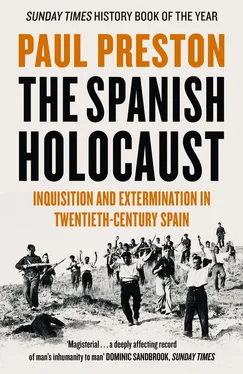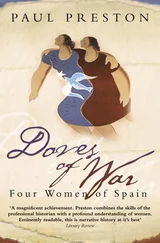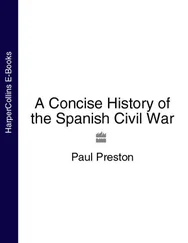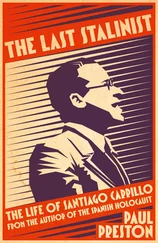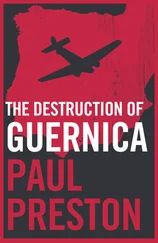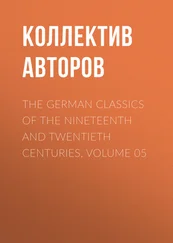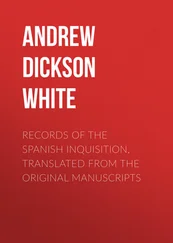In fact, as José Antonio boasted to the monarchist Antonio Goicoechea on 20 May 1936, being in prison was no impediment to directing the Falange’s role in the preparations for civil war. From his cell, he liaised with Carlists and with Renovación Española. 92He had already met General Mola on 8 March to offer the services of the Falange. Also in early March, José Antonio’s friend Ramón Serrano Suñer had put him in touch with other senior military figures including Yagüe, Mola’s key to the participation of the Moroccan Army. 93The role of the Falange would be to carry out acts of terrorism to provoke left-wing reprisals, the two things combining to justify right-wing jeremiads about disorder. From prison, José Antonio issued on 20 May the first of three clandestine leaflets with the title No Importa. Boletín de los Días de Persecución (No Matter. Bulletin of the Days of Persecution). Urging his followers to intensify their attacks on leftists, he wrote on 6 June, ‘Tomorrow, when brighter days dawn, the Falange will receive the laurels earned by being first in this holy crusade of violence.’ In the same issue, there was a call for the assassinations of the judge who had sent him to prison and of the Socialist parliamentary deputy for Cáceres, Luis Romero Solano, for his part in the arrest of José Luna, the Falange leader in Extremadura. 94
The principal orchestrator of the coup, General Mola, had been posted to Navarre in March. The government hoped thereby to neutralize him but, confident of the most influential officers in Morocco and of his police network, he still held the key strands of the rebellion. It was assumed that Mola would have few dealings with the deeply reactionary local Carlists. In fact, within three days of his arrival in Pamplona on 14 March, local officers introduced him to B. Félix Maíz, a thirty-six-year-old local businessman who was to be his liaison with the Carlists. Discovering a shared enthusiasm for The Protocols of the Elders of Zion, they hit it off immediately. To Maíz’s delight, Mola, who was still receiving paranoiac anti-Communist reports from the White Russians in Paris, told him that ‘we confront an enemy that is not Spanish’. Maíz, who took The Protocols as genuine, believed that a war to the death was imminent between Christians and the stooges of the Jews ‘the great beast – tightly knit hordes emerging from the swamp of evil’. His view of the political situation was even more disturbing: ‘all over Spain, there are gangs of creatures injected with rabies who are seeking Christian flesh in which to sink their teeth’. 95
The fantasies of Maíz were merely an extreme version of a carefully prepared fiction intended to justify the military coup and the subsequent repression. ‘Secret documents’ were concocted to ‘prove’ that a Soviet take-over in Spain was imminent. A kind of Spanish equivalent to The Protocols of the Elders of Zion, these ‘documents’ were intended to generate fear and indignation, not least because they contained blacklists of right-wingers intended to be murdered as soon as the alleged Communist take-over was completed. 96Such inventions presented a military coup as a patriotic act to save Spain from the assault masterminded by the dark hand of Judaism. With such a view of the enemy, it was but a short step to Mola’s first secret instructions to his fellow conspirators, issued in April. He wrote, ‘It has to be borne in mind that the action has to be violent in the extreme so as to subdue as soon as possible the enemy which is strong and well organized. It goes without saying that all leaders of political parties, societies and trade unions not part of the movement will be imprisoned and exemplary punishment carried out on them in order to choke off any rebellion or strikes.’ 97Mola, as a hardened Africanista, placed a high value on the value of terror in paralysing opponents. However, it was not just a question of gaining power but also the first step to ‘purifying’ Spain of the noxious elements of the left.
José Antonio was transferred to the prison in Alicante on the night of 5 June, and he immediately sent an emissary to Pamplona to reassure Mola that he remained committed to the coup and to offer four thousand Falangists as a shock force for the first days of the uprising. 98In a further testimony to the links between the military and street violence, the monarchist politician Antonio Goicoechea wrote on 14 June to the Italian government on behalf of the Falange, Renovación Española and the Comunión Tradicionalista to request funding for terrorist squads. Commenting that the military coup was well advanced, he wrote of ‘the unavoidable need to organize the atmosphere of violence’. 99
Despite mounting rural violence, the FNTT managed to maintain the discipline of its members, even after a bloody incident at the end of May near the town of Yeste in the south of Albacete. The fraudulent enclosure of communal lands by local caciques had condemned the peasants to desperate poverty. Many had lost their livelihood as a result of the construction of a reservoir near by in 1931, which took fertile land out of production and prevented local woodmen transporting timber via the Rivers Tus and Segura. In the spring of 1936, the efforts of the newly restored Republican–Socialist town council to place unemployed workers on estates had met with furious resistance. On 28 May, a group of workers and their families from the hamlet of La Graya cut down trees for charcoal and then began to plough on an estate called La Umbría. Once common land, La Umbría now belonged to the most powerful cacique, Antonio Alfaro. On his instructions, twenty-two Civil Guards arrived.
Most of the villagers fled but six remained. After beating them, the Civil Guards took them to La Graya, where they were further mistreated. At dawn the next day, a crowd of labourers from surrounding hamlets followed as the prisoners were being taken to the nearby town of Yeste to ensure that they would not be shot ‘trying to escape’ (the ley de fugas). The crowd swelled and, as they reached Yeste, it was agreed that the prisoners should be released into the custody of the Mayor. When the crowd pressed forward to greet the prisoners, a Civil Guard panicked and fired a shot. In the ensuing mêlée, a Civil Guard was killed. His companions opened fire on the crowd and then pursued fleeing peasants into the surrounding hills, killing seventeen people, including the deputy Mayor, and wounding many more. Fearing that the Civil Guards would return and burn La Graya, many villagers took refuge in nearby hamlets. Fifty FNTT members were arrested, including the Socialist Mayor of Yeste. 100Yeste and other clashes could have led to bloodshed on a large scale. However, the FNTT leadership restrained the rank and file, urging them to put their faith in the government’s accelerated agrarian reform. Faced with the new determination of the Popular Front, the large landowners began to look to the military for their protection.
A similar scale of belligerence from the landowners was revealed in Badajoz when the Civil Governor took the extraordinary step on 20 May of closing the provincial headquarters of the Association of Rural Estate-Owners which was co-ordinating efforts to sabotage the harvest and to mount a lock-out of unionized labour. 101It was to no avail; many landowners preferred to let the cereal harvest rot in order to impose discipline on the workers. To their fury, the Civil Governor decreed that the workers should bring in the harvest and keep part of the crop in lieu of wages. 102In the province of Cáceres, a systematic policy of provocation was carried out by well-armed Falangists. Among the rightists arrested there for public order offences in the spring and summer of 1936 were several members of the JAP. 103
It was a short step from the exasperation of starving labourers to disorder. The scale of hunger in rural Spain in 1936 is almost unimaginable today. On 21 April, the Civil Governor of Madrid was informed that the only available protein for peasants in the province was lizards and that children were fainting from malnutrition in their schools. The Civil Governor of Ciudad Real reported that in the south of the province peasants were living off boiled weeds. In Quintanar de la Orden in Toledo, men and women were found lying in the streets having collapsed from inanition. In many villages, and not only in the south, hunger provoked mass invasions of estates to steal crops or livestock. Attacks on food shops were not uncommon. In Fuente de Cantos in Badajoz, in May 1936, a meeting to discuss local unemployment was addressed by the local Socialist leader. Appalled by the evident distress of the men, women and children of his audience, he called on them to follow him to where there was food for all. He led them to one of the estates of the biggest owner in the area, the Conde de la Corte. The estate was largely given over to the pasture of pigs and sheep. The starving townspeople fell upon the pigs and, after killing them with sticks and knives, returned to Fuente de Cantos, bloodstained and staggering under the weight of the slaughtered pigs. Further to the north of Badajoz, in Quintana de la Serena, day-labourers entered an estate, stealing sheep to feed their families. 104
Читать дальше
